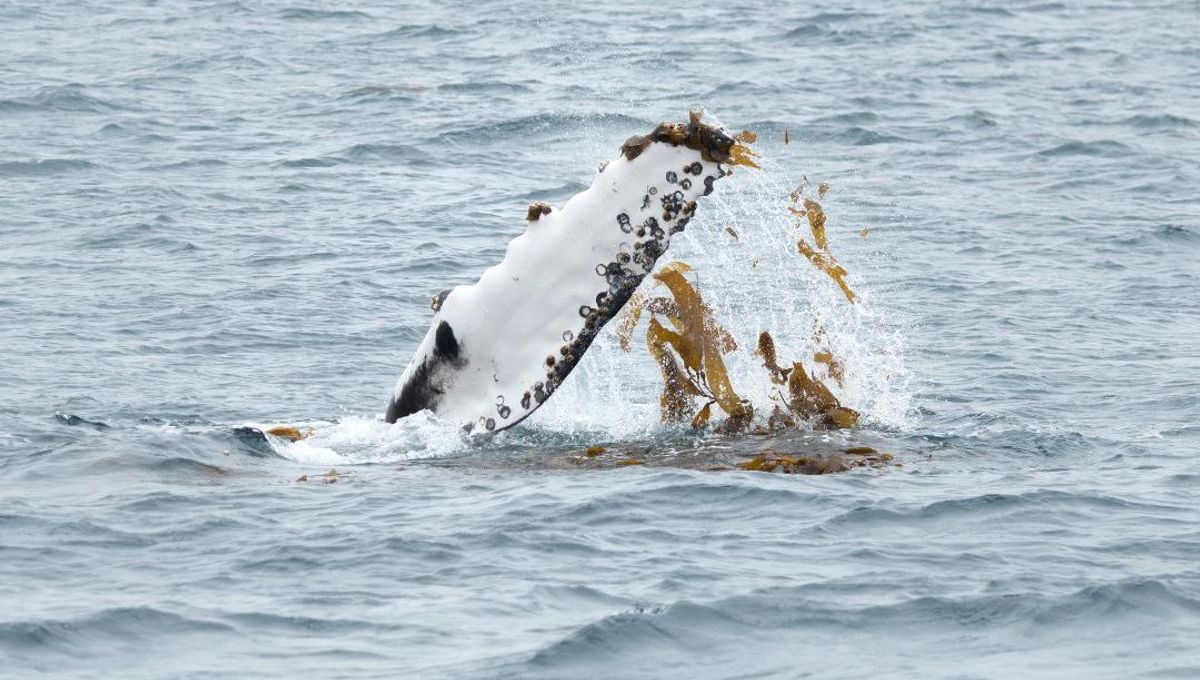
It turns out humans aren’t the only ones who enjoy a cheeky spa day – whales have been spotted having a grand old time frolicking about in seaweed, appearing to use the slimy sea algae as a body cleanser as well as for play.
Although it’s been well-documented that many cetaceans (whales, dolphins, and porpoises) are playful creatures who often use objects to play with, this particular behavior hasn’t been observed quite so much in baleen whales.
However, a new study has revealed that filter-feeding whales, such as humpbacks and gray whales, are just as fun-loving as their fellow cetaceans, rolling around and “playing” with kelp and seaweed floating at the water’s surface. This behavior is known as “kelping” and appears to be similar in different individuals across the world.
“The use of objects by cetaceans like baleen whales is well known, and their ability to interact with their environment in complex behaviours has been previously reported on,” said Jan-Olaf Meynecke, an author of the study, in a statement.
“But baleen whales, including humpback whales, are less often observed to perform object use, and this behaviour might be more common than previously thought.”
Meynecke and fellow researcher Hilla Kela analyzed three aerially observed instances of kelping on the east coast of Australia, on top of over 100 individual cases documented via photographs and videos on social media. This included 163 baleen whales, with humpbacks taking the top position, having interacted with seaweed in 95 separate events.
Whilst kelping meets all of the criteria that behavioral science considers to be “play”, it might have a purpose beyond fun too.
“There are two plausible theories: play and/or self-medication with seaweed,” explained Meynecke. “This behaviour may be playful but could also serve additional benefits in the context of learning and socialising, as well as ectoparasite removal and skin treatment by using brown algae’s antibacterial properties.”
In this way, it’s not entirely dissimilar to the seaweed facemasks found on drugstore shelves, which often claim to have antibacterial and anti-inflammatory elements to cleanse and soothe our skin. Although whales might not use it to treat nasty chin spots, their skin does have a lot of bacteria.
Kelping isn’t the only “spa treatment” whales have been spotted using either. Earlier this year, whales were observed for the first time rolling around in the sands of Australia’s Gold Coast Bay, using the rough sea floor to exfoliate their skin.
We never thought we’d see the day when whales have a better skincare routine than we do.
The study is published in the Journal of Marine Science and Engineering.
Source Link: Whales Love A Good Seaweed Mask At The Spa